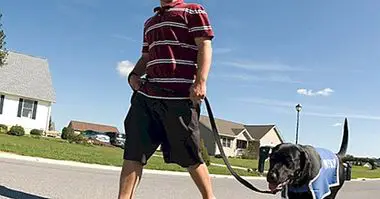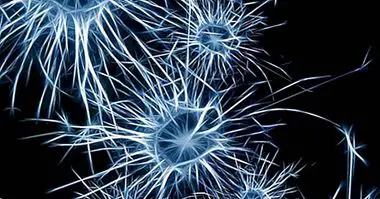Kleine-Levin syndrome: symptoms, causes and treatment
Sleep hours and hours without interruption ; for many people it may seem a pleasure to be able to establish a prolonged period of rest in which to replenish energy after a hard day's work.
But for others, it can be a real ordeal that greatly limits their lives because they can spend most of the day sleeping, in addition to presenting serious alterations in behavior and mood during the time they remain awake. We are talking about those people who suffer from the disorder known as the Kleine-Levin syndrome, a disorder related to hypersomnia .
The syndrome of the sleeping beauty
Also known as sleeping beauty syndrome , Kleine Levin syndrome is a disorder of neurological origin that is characterized by the presence of episodes of a deep hypersomnia, in which the individual can get to sleep up to twenty hours in a row.
In addition to hypersomnia, the presence of this syndrome is characteristic of this syndrome. cognitive and behavioral alterations . Memory and the ability to reason and judgment can also be altered, as well as physical and mental slowness and fatigue.
In the period in which he is awake the individual with Kleine-Levin syndrome manifests uninhibited and even compulsive behavior , with hyperphagia and hypersexuality and an attitude between infantile and aggressive. The subject has a labile and irritable emotionality that can trigger violent actions. Sometimes the presence of dissociative phenomena such as derealization, or perceptual alterations such as hallucinations can also be observed.
This disorder usually begins frequently in adolescence , with a higher prevalence in males, which causes a severe disability in the periods of time in which they present symptoms.
Episodes can last days or weeks , and can occur numerous times throughout the year. However, in the period of time between the different episodes, the behavior and the amount of sleep is normative, recovering their normal mental functions and being able to carry out normal life in those moments.
An unknown cause
The causes of this neurological disorder are not yet known , although it is speculated on with the presence of alterations in the functioning of the hypothalamus and the whole of the limbic system and some other Subcortical structures linked to the regulation of emotions and sleep .
Specifically, it has been observed that in many patients there is hypoperfusion in the limbic system, thalamus and frontotemporal cortex (that is, the amount of blood that reaches these regions is reduced, so they are not as irrigated as they should be). As well Electroencephalic activity seems to slow down .
A possible genetic influence that could explain the phenomenon has been studied, but although it has been found that in some cases there are several cases in the same family, there is no evidence to confirm it. It has also been speculated that it may be due to head trauma, infectious medical diseases or severe stress.
Treatment of Kleine-Levin syndrome
The Kleine-Levin syndrome does not have a clear etiology, so that it is difficult to perform a curative treatment . The treatment that is applied in the presence of this disorder usually focuses on the symptomatology.
As with other hypersomnia, they have often been used psychotropic drugs to control the symptoms . The use of stimulants can promote an increase in the activity of the subjects and reduce sleep episodes in duration and frequency, although on the other hand it can impair the presence of impulsive actions and hallucinations. Antipsychotics have also been used to manage the alterations behavioral, as well as antidepressants such as MAOIs and imapramine, mood stabilizers and anticonvulsants.
Psychological intervention
On a psychological level it is necessary use psychoeducation with both the patient and the environment due to the complications that their condition can entail at an affective, behavioral and social level, which can damage the support and help networks available to patients affected by this disorder. Those emotional problems derived from the experience of the disorder should also be treated, especially in asymptomatic periods.
The use of cognitive-behavioral techniques it is another element to take into account in this aspect, making use of cognitive restructuring or learning in ways to manage the situation. The objective is to make the interpretation of the experience of the symptoms as appropriate as possible.
Fortunately, in many of the cases despite being recurrent Kleine-Levin syndrome tends to disappear over the years .
- Maybe you're interested: "The 10 most used cognitive-behavioral techniques"
Bibliographic references:
- Arias, M .; Crespo, J.M .; Pérez, J: Requena, I .; Sesar, A. & Peleteiro, M. (2002). Kleine-Levin syndrome: diagnostic contribution of cerebral SPECT. Rev. Neurol .; 35 (6): 531-533.
- Arnulf, A .; Lecendreux, M .; Franco, P. & Dauvilliers, Y. (2008). Le syndrome de Kleine-Levine. Encyclopédie Orphanet. [Online]. Available at: www.orpha.net/data/patho/Pro/fr/KleineLevin-FRfrPro10326v01.pdf [20/05/2017].
- Erro, M.E. and Zandio, B. (2007). Hypersomnias: diagnosis, classification and treatment. Annals of the Navarre Health System; 30. Hospital of Navarra. Pamplona.



















